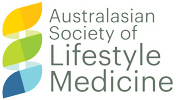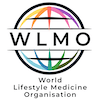
Health versus the absence of disease
Health
“Health is a state of complete physical, mental and social well-being and not merely the absence of disease and infirmity”
WHO, April 1948
Disease
There is not one clear and uniform definition of disease similar to the one made by WHO in 1948. Most of the various definitions of disease tend to agree on the notion that disease is distinct in nature from physical injury. If we try to define disease by turning our definition of health on its head; It would be that
Disease is a state of complete physical, emotional and social un-wellness and misbalance.
The absence of disease
Absence of disease can be conceived of as a period of early disease-development, where all internal and external factors that were contributing towards health are starting to dysfunction and no measurable markers of disease (symptoms) have yet emerged. It is the window of opportunity where lifestyle interventions, or behavioral changes, are key players in predicting and manipulating future outcomes of wellbeing. It is likewise a time when individuals can have pivotal influence over their own future wellbeing, which is determined by a dynamic multitude of everyday lifestyle decisions and behaviors.
The way one eats (and what one eats), prepares meals, consumes other substances (tobacco, recreational drugs), moves their body, sleeps, interacts with both the external environmental and their internal world (mental processes), deals with the inevitable stressors of life (from major catastrophes, losses and aging to everyday commuting, long sedentary working hours, etc.) are all called behavior.
The behavioral choices one makes in all those domains are the main predictors of their future path either towards health or disease. Human behaviour is a set of actions frequently repeated as a result of genetic/social/familial conditioning. When that behavior becomes a fixed and established pattern that lead towards the disease-end of the spectrum, and change is required, then the role of General practitioner is as important as it is challenging.
The majority (if not all) of chronic conditions are the result of repetitive sequences of a multitude of harmful choices/ behaviors. These behaviors may be interpreted as often being implicitly harmful, which is to say that the harm they cause to an individual is discrete and difficult to recognize. Oftentimes they may be veiled as beneficial coping strategies in the short-run, all the while accumulating and posing significant risks to general health in the long-run. Therefore, this critical time-frame for intervention which we have defined as, the absence of disease, should be understood as a window of opportunity in which the general practitioner must take a leading role in the health-process.
The majority of GP visits provide excellent opportunities for checking lifestyle habits, for education and intervention (if needed). Checking lifestyle history (checking 8 vitals), and providing a brief education on lifestyle practices are less difficult part of the GP’s role as an LS-practitioner. The challenging part is determining when and how intervention is required. Lifestyle intervention occurs when a doctor “sees” the fragile-spot in a patient’s behavioral architecture and decides that it is important to, alongside the patient, address this source of potential harm. (Un)fortunately, the human mind is much more complex than a computer, and simple ‘fixing’ the source of harm is not an appropriate solution.
This is why self-determination theory1,2 and self-efficacy theory3,4 are indispensable theoretical frameworks that all health professionals who are in the primary care sector need to understand. These two paradigms postulate that all human beings require three basic needs to be met so that they can behave according to their innate and universal need (and potential) for development.
The three basic needs & instigating change
- Competency: seek to control the outcome and masters one’s own experience; in other words, we all need to feel in control of our own life.
- Relatedness: will to connect in a caring and involved way with others; in other words, humans are social beings in need of compassionate social interactions
- Autonomy: need to be the causal agents of our own life and to act in harmony with one’s integrated self; in other words, we all have an internal need to grow and develop according to our inner compass.
Once those basic needs are met, there are two different types of motivation through which change can be catalysed: intrinsic and extrinsic.
- Intrinsic motivation is the natural drive to seek challenges and possibilities. That one is always the winner.
- Extrinsic motivation is a drive to seek challenges and possibilities which is itself derived from external sources. There are different types of external motivations and some of them are less likely than others to be integrated into one’s self5.
Again, translating all of this into everyday language and applying it to General Practice: these theories clarify why simply “fixing” problematic behavior and giving rational verbal advice about the need to change certain behavior simply does not work. However, what does work in the process of catalyzing change is:
- Building rapport and trust with the patient by genuinely listening and trying to hear their perspective on their own story. Forming empathic alliance.
- After trust is established, sparking curiosity and desire within his/her mind about the possibility of change and its achievability.
- Using their value system to build and reinforce their own trust in themselves as an agent of change.
Once this ball has started rolling (which is the hardest part-to form the ball), our role is to keep that space open for the person, all the while making sure that it keeps on rolling towards health. Of course, this whole process is much more complex and requires multitude of other people (allied practitioners, other doctors, family, friends, social structures like recreational centers, peer groups, etc.) along the way. The role of the GP is central and vital, as they are in a position to connect with the patient in this golden window of opportunity, when they are in the state of absence of disease. The GP can effectively address their lifestyle behavior, and then gently and skillfully initiate that important process of change towards health rather than disease.
Preventive medicine for absence of disease state
Preventive medicine: Medical practices that are designed to avert and avoid disease.
This is what preventive medicine is all about. If we tap into the patient’s internal system of competence, relatedness and autonomy needs; if we initiate their intrinsic motivation by looking into the whole person embedded in a social network of interactions; if we bring our evidence-based knowledge and interventions; then, we are effectively instantiating a contemporary new model of preventive medicine that has the power to change the rules of the medical game. We all need to step up our game if we want to win against the chronic disease epidemic that faces our world today.
- APA Psyc NET, Canadian Psychology, Vol49, Aug2018, 182-185, Self-determination Theory: A macro theory of human motivation, development and health, Deci, Edward. L; Ryan, Richard M,
- International Journal of Behavioral Nutrition and Physical Activity 9, Article 78, 2012, Exercise, Physical Activity and Self-determination Theory: A systemic Review, Pedro J Teixeira, Eliana V Cerrace, et al.
- Journal of Management, Emerging Positive Organisational Behaviour, June 2012, Fred Luthans, Carolyn M Youssef
- ASA Psyc NET, Relations of self-efficacy beliefs to academic outcomes: A meta analytic investigation, Journal of Counselling Psychology, Vol 38(1), Jan 1991,30-38, Multon, Karen D., et al.
- ELSEVIER Contemporary Educational Psychology, Vol25, Issue1, Jan 2000, Page 54-67, Intrinsic and Extrinsic Motivations: Classic Definitions and New Directions, Richard M. Ryan, Edward l. Deci
This article has been written for the Australasian Society of Lifestyle Medicine (ASLM) by the documented original author. The views and opinions expressed in this article are solely those of the original author and do not necessarily represent the views and opinions of the ASLM or its Board.



